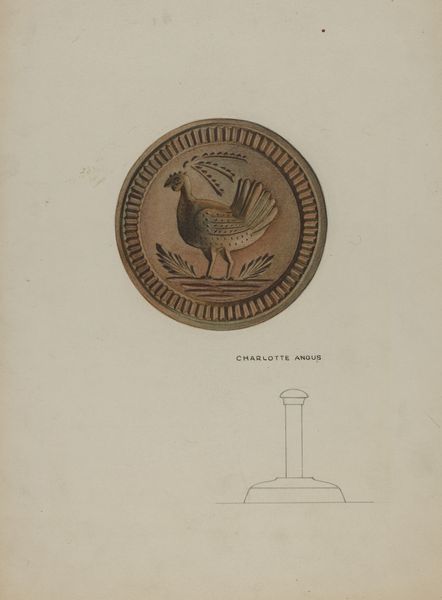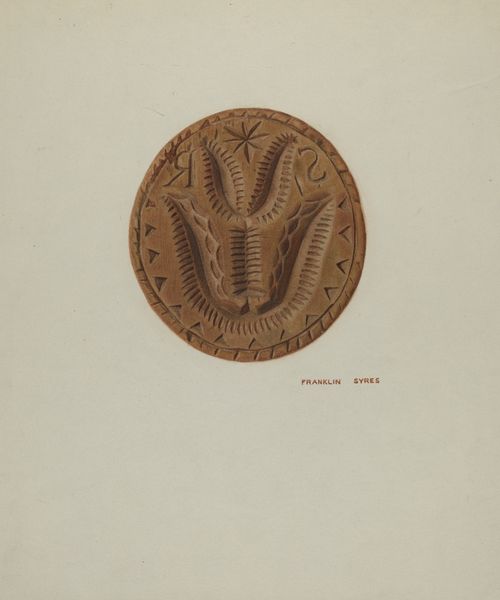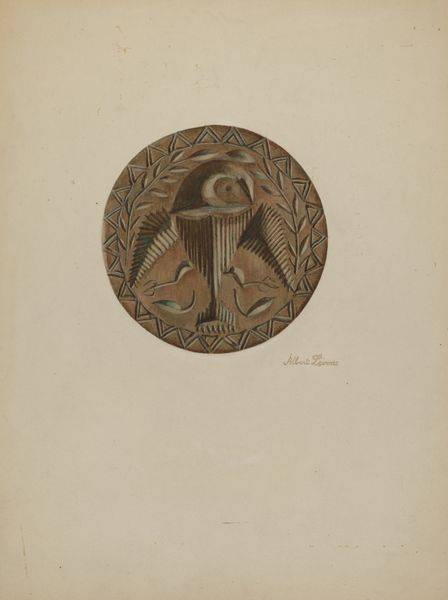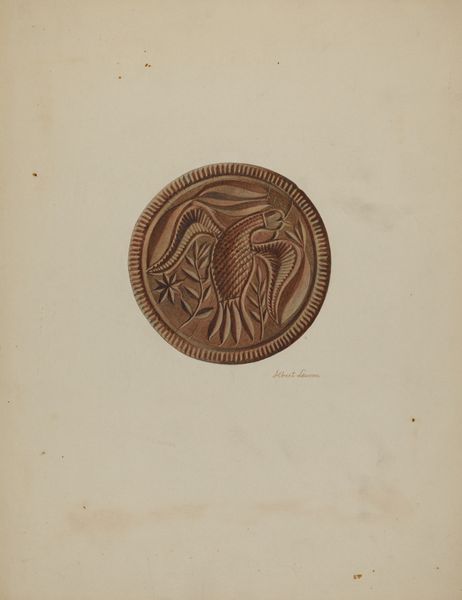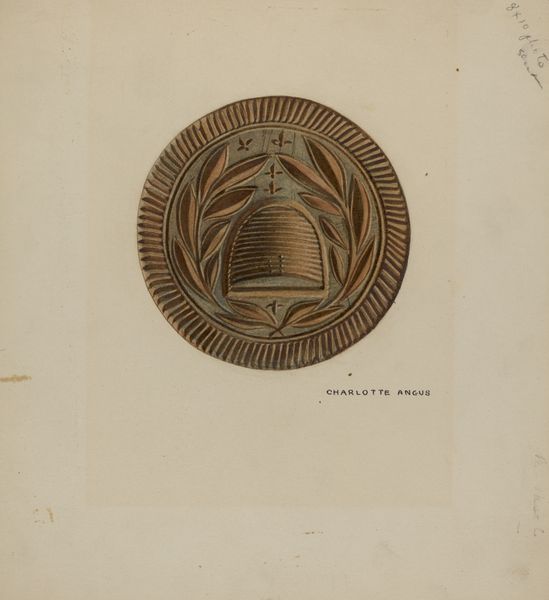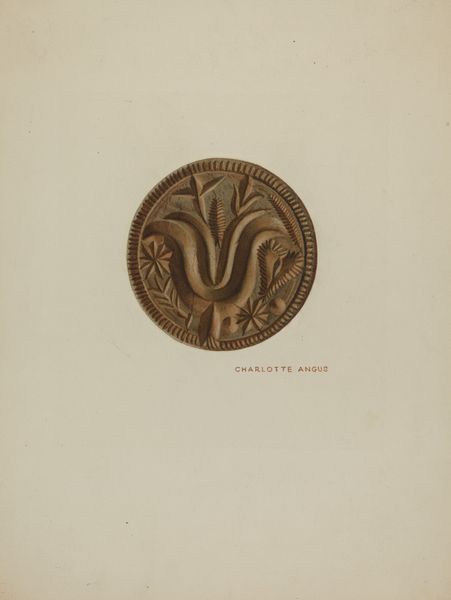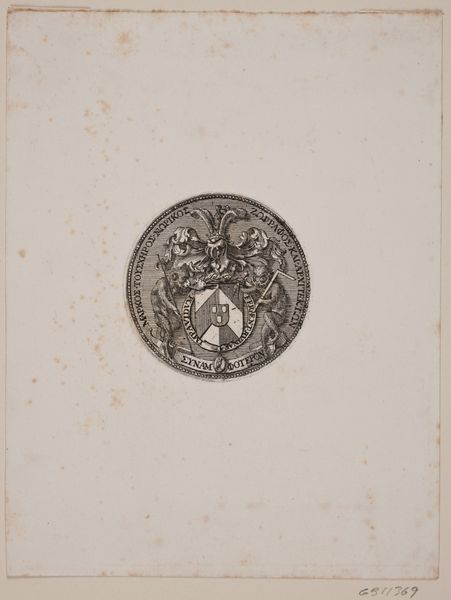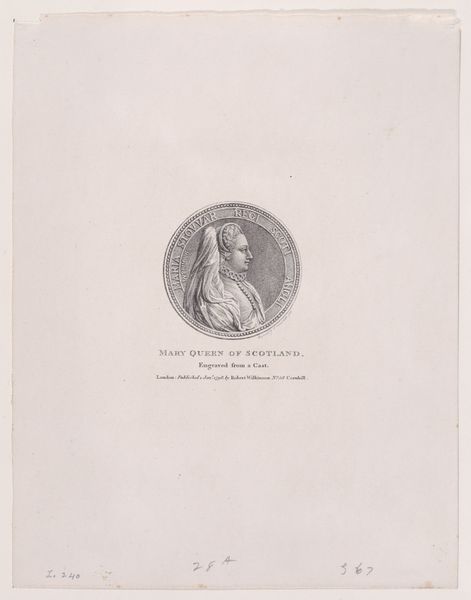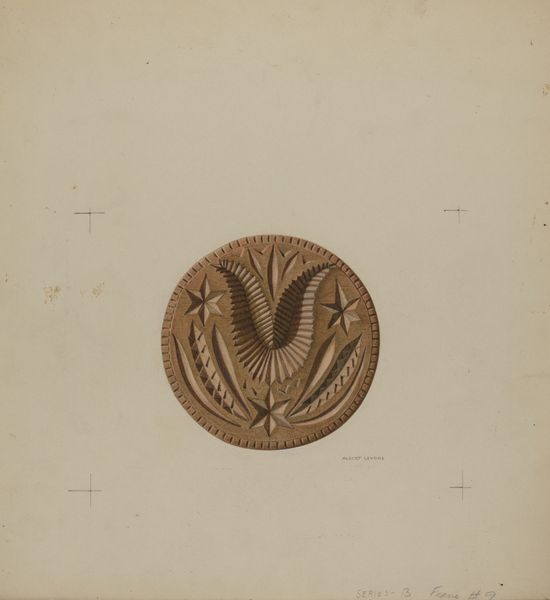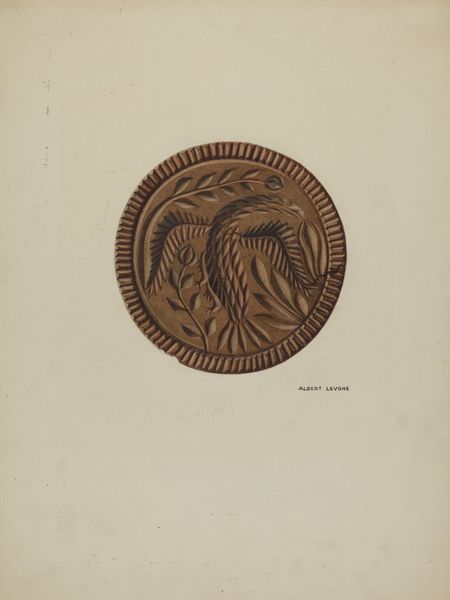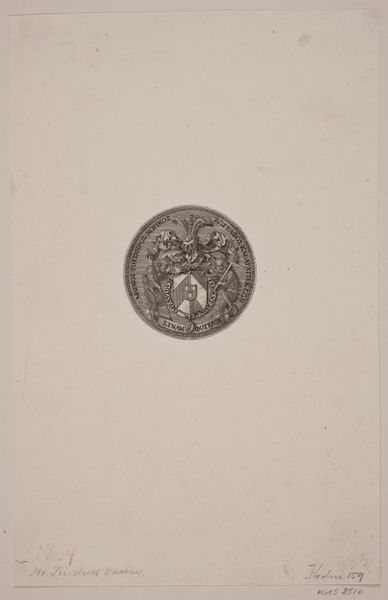
drawing, paper, woodcut
#
drawing
#
paper
#
folk-art
#
woodcut
Dimensions: overall: 32.8 x 24.5 cm (12 15/16 x 9 5/8 in.)
Copyright: National Gallery of Art: CC0 1.0
Editor: Here we have Charlotte Angus' "Pa. German Butter Mold", crafted around 1938. It's a woodcut print on paper and I immediately notice the concentric rings around the central image and how they draw the eye inward. What formal qualities strike you as significant in this work? Curator: The emphasis on circular form, the high degree of relief apparent in the woodcut—these point to a structural preoccupation with rhythm and texture. Note how the design elements—the foliate border, the stylized pineapple form—are integrated through repetition and controlled variation of line. Observe how light would play across the carved surface. Editor: It feels so contained and deliberate, especially given that it depicts something utilitarian like a butter mold. It’s interesting that the artist focused on these more formal aspects. Curator: Indeed. The tension between representation and abstraction is critical here. It elevates the functional object to a study in pure form. The success of this is rooted in a profound engagement with medium, how deeply the design can be expressed into the form. What visual relationship is forged between positive and negative spaces to create an aesthetically rich composition? Editor: I hadn’t thought about the negative space as much. Now I see how it contributes to the overall sense of balance and rhythm you mentioned. Thanks! Curator: Precisely. A work such as this reveals how much visual information we derive from even a seemingly simple formal structure. This careful control of visual dynamics creates an interesting dialogue. Editor: Absolutely. It is surprising how much one can appreciate something like a butter mold when seen simply as visual components. Curator: Agreed. Formal analysis enables a deeper engagement with the artist's creative process. It enables us to think differently about utility, presentation, and structure.
Comments
No comments
Be the first to comment and join the conversation on the ultimate creative platform.
